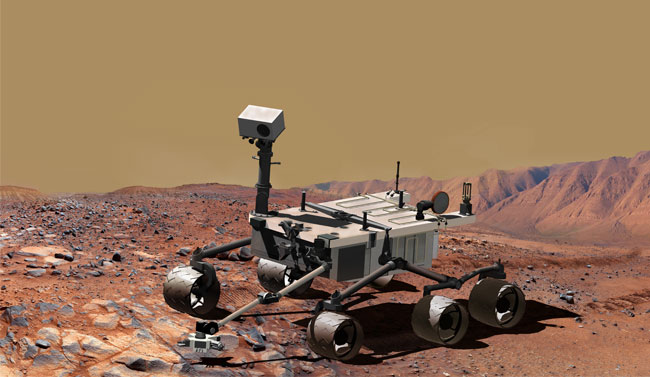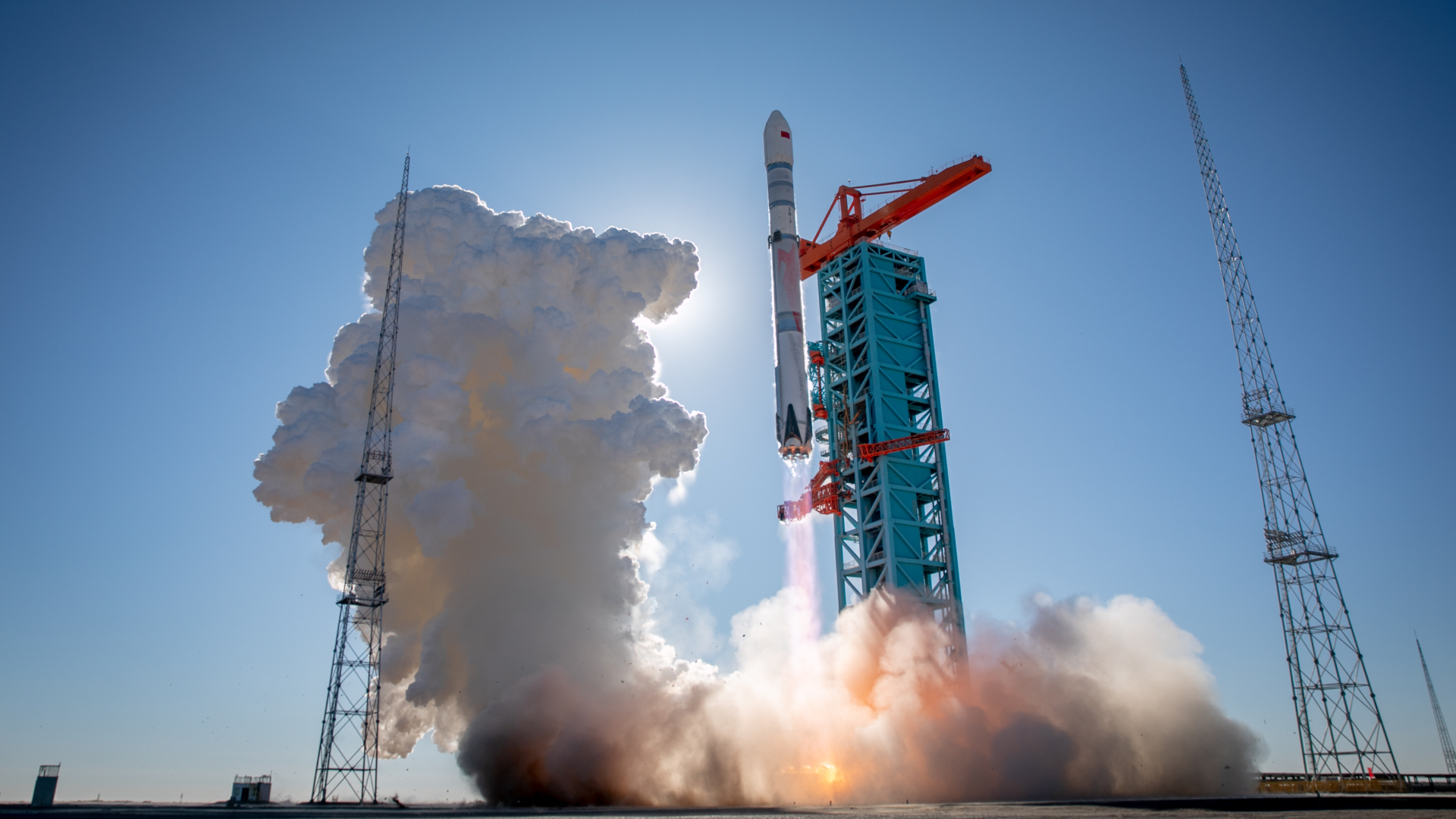Plutonium Shortage May Thwart Future NASA Missions to Outer Planets

This story was updated at 4:15 p.m.EST, March 7.
NASA is facing the prospect of trying to explore deep space without the aid of the long-lasting nuclear batteries it has relied upon for decades to send spacecraft to destinations where sunlight is in short supply.
NASA Administrator Mike Griffin told the House Appropriations subcommittee on March 5 that the U.S. inventory of plutonium-238 - the radioactive material essential for building long-lasting batteries known to the experts as radioisotope power systems - is running out quickly.
“Looking ahead, plutonium is in short supply,” Griffin told lawmakers during the first of two days of hearings on the U.S. space agency’s 2009 budget request.
Griffin was asked about the plutonium-238 situation by Rep. Adam Schiff (D-Calif.). The Pasadena-area congressman’s district is home to the Jet Propulsion Laboratory - the NASA-funded facility building the space agency’s next nuclear-powered spacecraft, the 2009 Mars ScienceLaboratory, or MSL.
“After MSL launches, we’re pretty much out of plutonium,” Griffin said.
The United States stopped producing plutonium-238 in 1988 and since then has relied upon a dwindling stockpile supplemented since 1992 by periodic purchases of the material from Russia.
Breaking space news, the latest updates on rocket launches, skywatching events and more!
NASA’s Pluto-boundNew Horizons spacecraft, for example, is powered by a radioisotope power system fueled by Russian plutonium, as will be the system that powers the MarsScience Laboratory.
Though Griffin did not mention it, the U.S. Department of Energy over the winter quietly shelved long-standing plans to resume domestic production of plutonium-238. In 2005, the Department of Energy (DOE) gave public notice of its intent to consolidate the nation’s radioisotope power system activities at Idaho National Laboratory and start producing plutonium-238 there by 2011.
Restarting production was projected at the time to cost $250 million and take five years. Griffin said during the hearing that the DOE’s latest estimate is that a restart would take seven years.
Angela Hill, an Energy Department spokeswoman, told Space News in an e-mail that those plans are now on hold. “DOE did not request funding in 2009 for [Plutonium-238] production, since NASA has been directed to fund any new production capabilities,” Hill wrote. “Production may or may not resume based on NASA’s decision. Based on current mission plans, DOE will only continue to provide new Radioisotope Power Systems until 2015.”
NASA’s 2009 budget request includes no money for re-establishing the Department of Energy’s long dormant plutonium-238 production capability.
Meanwhile, how much of the plutonium-238 the United States has at its disposal was not immediately clear. DOE reported in 2005 that its inventory stood at 39.5 kilograms, with U.S.national security customers and NASA expected to consume all but 6.5 kilograms by 2010. The same report said an additional 20 kilograms of weakened plutonium-238 could be harvested by 2011 from milliwatt power systems aboard old nuclear missiles slated to be decommissioned. However, the reclaimed material would have to be mixed with fresher stock to be useable.
U.S. industry sources said they had been told that the United States has a total of just over 11 kilograms in order to meet NASA’s projected demand through the middle of the next decade.
Hill said only that the United States has received an additional 5 kilograms of plutonium-238 from Russia since 2005 and has another 4.9 kilograms on order for delivery this year.
Alan Stern, NASA associate administrator for science, testifying before the House Appropriations commerce, justice, science subcommittee alongside Griffin, said he believed the United States had sufficient plutonium-238 on hand or on order to fuel next year’s Mars Science Lab, an outer planets flagship mission targeted for 2017 and a Discovery-class mission slated to fly a couple of years earlier to test a more efficient radioisotope power system that NASA and the Energy Department have in development.
To help ensure there is enough plutonium-238 for those missions, NASA notified scientists in January that its next New Frontiers solicitation, due out in June, will seek only missions that do not require a nuclear power source. Industry sources said that limitation will put scientists wishing to propose outer-planet destinations including Jupiter and Saturn for the 2016 New Frontiers flight opportunity at a decided disadvantage.
“In the future, in some future year not too far from now, we will have used the last U.S. kilogram of plutonium-238,” Griffin said. “And if we want more plutonium-238 we will have to buy it from Russia.”
Griffin, who has said many times that he finds it “unseemly” that the United States may have to depend entirely on Russia to access the space station between the space shuttle’s retirement in 2010 and the introduction several years later of the Orion Crew Exploration Vehicle or a commercial alternative, made clear he was no more pleased with the prospect of relying entirely on Russia for flying space missions requiring nuclear power sources.
“I think it’s appalling,” he said.
But even the Russian supply might not last for much longer.
When the hearing resumed on March 6, Griffin told lawmakers Russia has advised the United States “that they are down to their last 10 kilograms of plutonium.”
“We are now foreseeing the end of that Russian line,” he said.
Griffin also clarified that NASA has been assured of enough plutonium-238 to do the MSL, a 2013 or 2014Discovery-class mission and an outer-planets flagship mission targeted for 2016or 2017.
“When those missions are allocated, we have no more,” he said.
Griffin said absent a national decision to restart production, NASA’s planetary science program “would be severely hampered.”
John Logsdon, executive director of the Space Policy Institute at George Washington University here, said not restarting plutonium-238 production puts the U.S. space program in an undesirable position of vulnerability.
“The major risk is political,” Logsdon said. “It begs the question whether Russia is a reliable enough source, under plausible future political scenarios, that we can count on it.”
Logsdon said the United States also could find itself paying dearly for Russia’s remaining supply.
“Anymonopoly supplier can name their own price,” he said.
- VIDEO:Mars Rover Dynasty
- VIDEO:Looking for Life in All the Right Places
- VIDEO:Red Dust Dangers
Brian Berger is the Editor-in-Chief of SpaceNews, a bi-weekly space industry news magazine, and SpaceNews.com. He joined SpaceNews covering NASA in 1998 and was named Senior Staff Writer in 2004 before becoming Deputy Editor in 2008. Brian's reporting on NASA's 2003 Columbia space shuttle accident and received the Communications Award from the National Space Club Huntsville Chapter in 2019. Brian received a bachelor's degree in magazine production and editing from Ohio University's E.W. Scripps School of Journalism.
